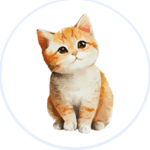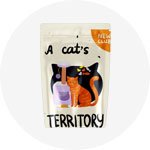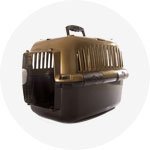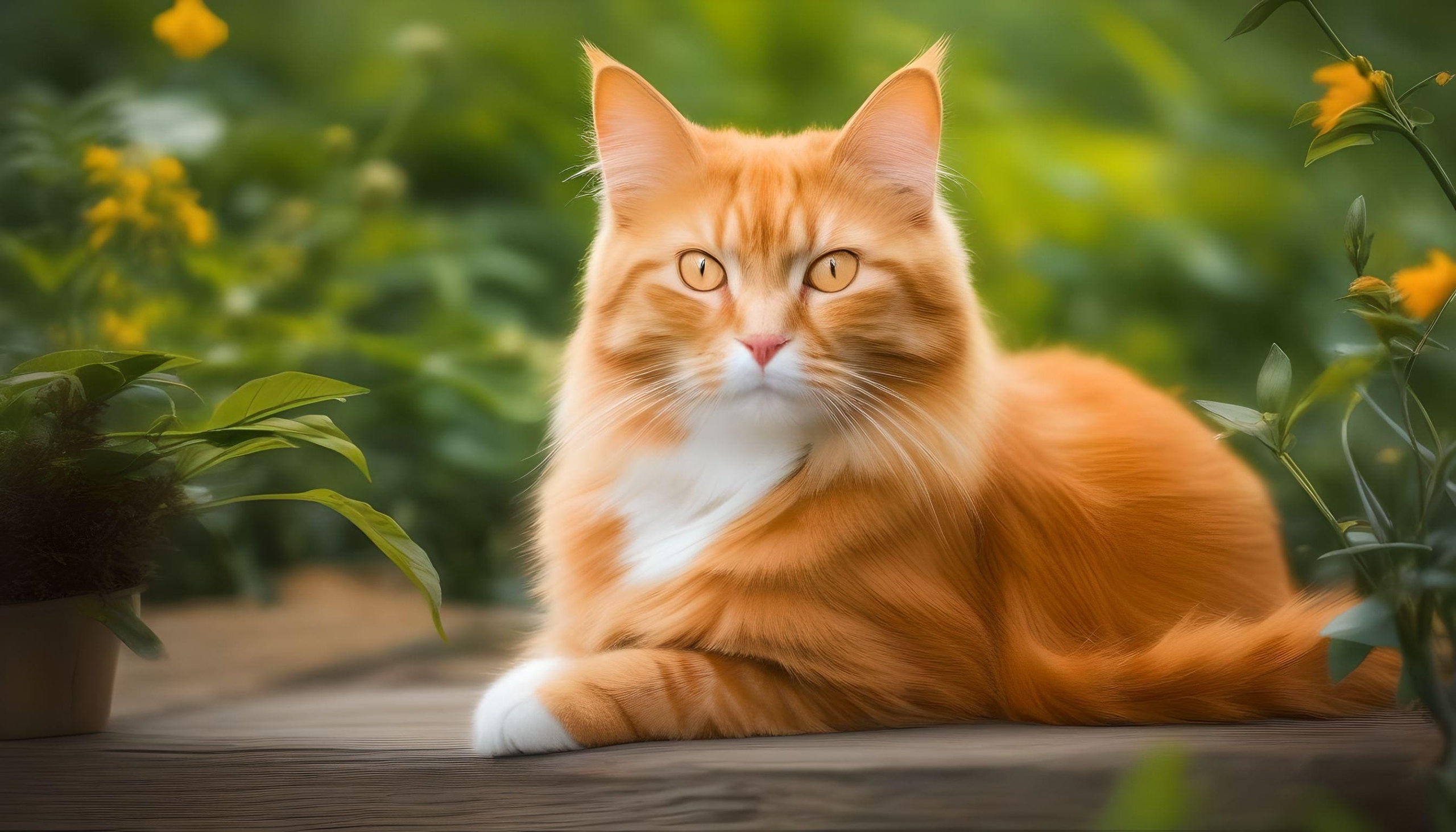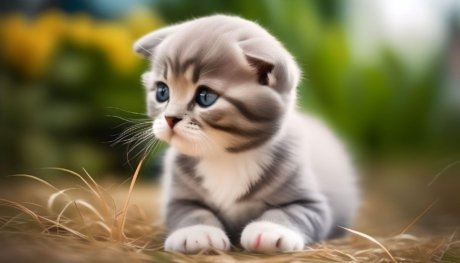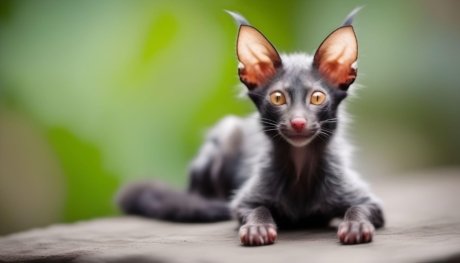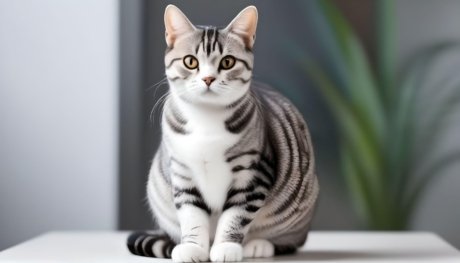Orange Cats | Top 15 Breeds, Prices, Facts, Care Tips, Health Issues
Orange cats, with their captivating coat colors and distinct personalities, have carved out a special place in the world of feline enthusiasts. Their fiery hues and playful charm have made them a favorite among cat lovers. But what is it that makes these cats so unique, and why are they often associated with certain traits and behaviors? In this post, we delve into the world of orange cats, uncovering the mysteries of their genetics, sharing care tips, and exploring the fascinating world of these vibrant feline companions. Join us as we embark on a journey to discover the enigmatic allure of orange cats.
Orange Cat
The orange cats, with its vibrant and eye-catching fur, is a charming and popular feline breed that has captured the hearts of cat enthusiasts all around the world. These furry creatures are not only adored for their striking appearance but also for their unique personalities and playful demeanor.

One of the most distinctive features of the orange cat is its stunning coat color. This breed can vary in shades, ranging from light cream to deep, fiery orange. Their fur is often described as soft and velvety, making them a delight to pet and cuddle with. The bright hue of their fur sets them apart from other cat breeds, making them stand out and catch the eye of anyone who encounters them.
Orange cats are known for their friendly and affectionate nature. They are social animals that enjoy interacting with their human companions. They tend to form strong bonds with their owners and are often seen following them around the house, seeking attention and affection. Their amiable disposition makes them wonderful pets for families and individuals alike.
In addition to their friendly nature, orange cats are renowned for their playful and active behavior. They have a high energy level and love to engage in various activities, such as chasing toys, climbing, and exploring their surroundings. This makes them a lively and entertaining addition to any household, ensuring that there is never a dull moment when an orange cat is around.

These feline companions are also known for their intelligence. They can be trained to perform various tricks and commands, making them a great choice for those who enjoy teaching their pets new skills. Their intelligence and curiosity make them excellent problem solvers and explorers, often discovering hidden nooks and crannies in your home.
When it comes to grooming, orange cats require regular care to maintain their luxurious coats. Brushing them regularly helps reduce shedding and prevents matting. Their diet should be well-balanced to keep their fur healthy and their weight in check. Regular vet check-ups are essential to ensure their overall health and well-being.
Orange Cat Characteristics
Here are some common characteristics of an orange cat:
| Characteristic | Description |
|---|---|
| Coat Color | Vibrant shades of orange, ranging from light cream to deep fiery orange. |
| Personality | Friendly, affectionate, and social, forming strong bonds with their owners. |
| Playfulness | Highly active and playful, enjoying activities like chasing toys and exploring their surroundings. |
| Intelligence | Smart and curious, capable of learning tricks and problem-solving. |
| Grooming Requirements | Regular grooming, including brushing to reduce shedding and prevent matting. |
| Diet | Requires a well-balanced diet for healthy fur and weight management. |
| Health Care | Regular vet check-ups are essential for overall health and well-being. |
Fat Orange Cat Baby Kittens
Fat orange cat baby kittens are a sight to behold. These plump and roly-poly furballs are the epitome of cuteness. Their chubby cheeks and round bellies make them utterly endearing. As they grow, they may develop into big, fluffy orange cats, but their early stages are filled with exploration and play. Watching these little ones pounce on toys or curl up for a nap is a heartwarming experience that can brighten anyone’s day.
Orange Tabby Cat
The orange tabby cat is a widely adored feline due to its distinctive coat. Tabby cats are characterized by their striped or mottled patterns, and when they come in shades of orange, their unique appearance becomes even more captivating. These cats have personalities that match their striking looks – they are often known for being friendly, curious, and full of playful energy.
Ginger Orange Tabby Cat
Ginger orange tabby cats, often referred to as “ginger cats,” possess a fiery, reddish-orange hue in their fur. Their bold coloring is matched by a warm and sociable personality. These cats tend to be outgoing and enjoy social interactions, making them great companions for households with multiple family members or other pets.
Fluffy Orange Cat
Fluffy orange cats are pure indulgence for cat lovers. Their lush, voluminous fur is a sensory delight, and it’s impossible to resist running your fingers through it. Their softness and visual appeal are a testament to the joy of pet ownership. Fluffy orange cats are not just pleasing to the eye; they are also known for their playfulness and affection.
Big Orange Cat
Big orange cats are majestic in both size and presence. Their large frames, along with their vibrant orange fur, make them stand out in any room. These cats often carry themselves with a sense of regal dignity, despite their playful and friendly nature. Sharing your home with a big orange cat is like having a furry king or queen as part of the family.

Orange And White Norwegian Forest Cat
The orange and white Norwegian Forest cat is a visual masterpiece. Their striking coat patterns, blending orange with white, make them a work of art. Just like their orange counterparts, they are friendly and sociable, making them excellent companions for those seeking a stunning and affectionate feline friend.
Long Hair Orange Cat
Long-haired orange cats are a true delight for the eyes and the senses. Their flowing fur is a testament to their regal appearance, and it’s impossible not to be captivated by their beauty. Despite their stunning looks, they are known for their playful and affectionate nature, offering the best of both worlds to their owners. Regular grooming is essential to maintain their luxurious coat.
Long Hair Orange Tabby Cat
Orange tabby cats with long fur are a combination of charm and elegance. Their distinctive striped coats, combined with their flowing fur, make them a picture of feline grace. These cats have the same playful and affectionate nature as other orange tabby cats but require diligent grooming to keep their long coats in top condition.
Orange Female Cat
Female orange cats are exceptional pets. They possess all the wonderful qualities that their male counterparts have, including affection, playfulness, and loyalty. Their personalities may vary, and whether you have a female orange Maine Coon, Siamese, or Persian cat, you’re in for a delightful companionship experience.
Orange Cats Male
Male orange cats are equally delightful as their female counterparts. They come in various breeds and coat lengths, each with its own unique charm. Whether you have a male orange Bengal, Ragdoll, or British Shorthair cat, you can expect a furry friend that is loving, energetic, and ready to make your home a happier place.
Orange Cat Colour Variations:
There are mainly 8 types of Colour Variations in orange cats, that are:
1. Orange And White Cat
Orange and white cats, also known as “orange and white bicolor” cats, have a distinctive combination of orange and white fur. These cats can have orange spots or patches on a predominantly white coat or vice versa. The contrast between the two colors creates a visually striking and charming appearance. These cats often exhibit friendly and sociable personalities, making them wonderful companions.
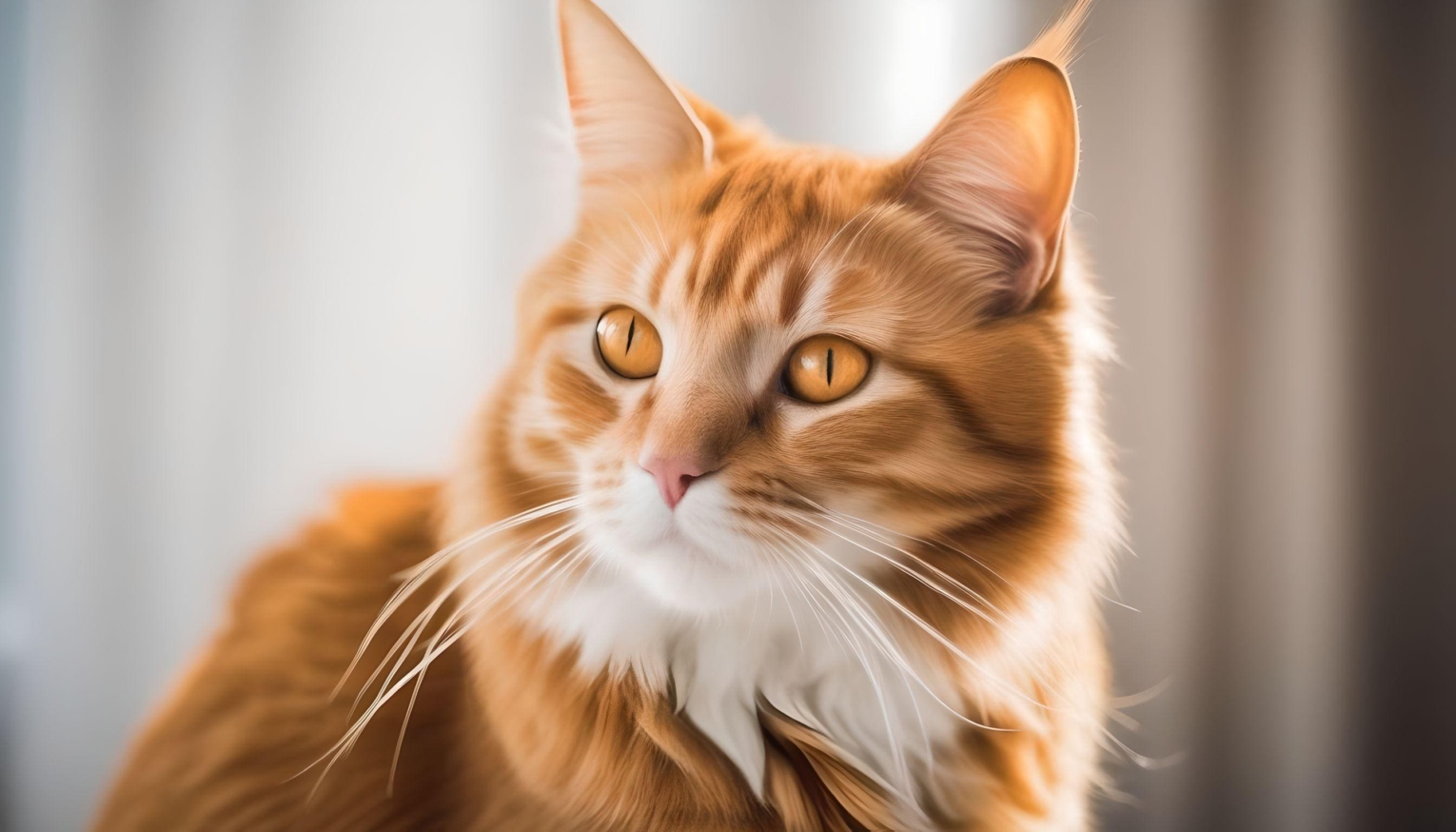
2. Black And Orange Cat
Black and orange cats, commonly referred to as “tortoiseshell” or “calico” cats, feature a unique mosaic of black and orange patches on their fur. The interplay of these two colors creates a beautiful and complex pattern. These cats are often known for their independent and spirited personalities, and they come in a variety of breeds.
3. Grey And Orange Cat
Grey and orange cats, sometimes called “torbie” cats, display a captivating blend of grey and orange in their fur. The combination of these colors results in a lovely, earthy appearance with a hint of orange. Torbie cats often have playful and affectionate personalities, making them cherished family pets.
4. Orange White Cat
Orange and white cats are known for their elegant and harmonious color combination. The interplay of these two colors varies from cat to cat, resulting in a unique appearance for each individual. Orange and white cats tend to be friendly and sociable, forming strong bonds with their owners.
5. Light Orange Cat
Light orange cats have a soft and delicate hue in their fur. Their coat color often falls on the paler end of the orange spectrum, creating a gentle and subtle appearance. These cats typically have calm and friendly personalities, making them ideal companions for those seeking a more laid-back feline friend.

6. Cat With Orange Eyes
Cats with orange eyes are a captivating sight. Their eyes can range from a pale orange to a deep amber color. These eye-catching cats come in various coat colors and patterns, but it’s their eyes that steal the show. Orange-eyed cats often have unique and engaging personalities, and their eye color adds to their allure.
7. Orange Cat With Blue Eyes
Orange cats with blue eyes are a mesmerizing combination of colors. The contrast between the vibrant orange fur and the striking blue eyes creates a visually stunning effect. These cats are often sought after for their unique appearance. The personality of an orange cat with blue eyes can vary, but they are known for being charming and affectionate.
8. Black Cat Orange Eyes
Black cats with orange eyes are a rare and fascinating combination. The deep, dark fur contrasts dramatically with the fiery orange eyes, making them stand out in any setting. These cats often possess strong and independent personalities, and their appearance adds an air of mystery to their character.
Top 15 Orange Cat Breeds
These top 15 orange cat breeds offer a diverse range of appearances, personalities, and traits, providing cat lovers with an array of options to find their perfect furry companion. Whether you’re looking for elegance, playfulness, or a unique appearance, there’s an orange cat breed to suit your preferences and lifestyle.
1. Orange Maine Coon Cat

The Maine Coon is known as the gentle giant of the cat world, and when they come in an orange coat, they’re truly magnificent. These cats are not only known for their size but also for their friendly and sociable personalities. They form strong bonds with their human companions and are often described as “gentle giants.”
- Behavior/Personality: Gentle giant, friendly, sociable
- Temperament: Affectionate and sociable
- Height: 10-16 inches (25-40 cm)
- Weight: 13-18 pounds (6-8 kg)
- Good Pet? Yes, they make excellent family pets.
- Price:
- INR 15,000 – 30,000 (Approx.)
- USD 200 – 400 (Approx.)
2. Orange Persian Cat

The orange Persian cat is the epitome of elegance and refinement. These cats have long, luxurious fur and distinct facial features. Their calm and gentle temperament makes them well-suited for a peaceful and quiet home environment. Grooming their silky coats is an essential part of their care routine.
- Behavior/Personality: Elegant, calm, gentle
- Temperament: Calm and reserved
- Height: 10-11 inches (25-28 cm)
- Weight: 7-12 pounds (3-5.5 kg)
- Good Pet? Ideal for a peaceful and quiet home.
- Price:
- INR 20,000 – 50,000 (Approx.)
- USD 270 – 670 (Approx.)
3. Orange Norwegian Forest Cat

Orange Norwegian Forest cats are a combination of beauty and strength. Originating from the rugged Norwegian wilderness, they have sturdy bodies and thick, water-repellent fur. These cats are friendly and make wonderful family pets, often adapting well to various living conditions.
- Behavior/Personality: Sturdy, friendly, adaptable
- Temperament: Friendly and adaptable
- Height: 10-12 inches (25-30 cm)
- Weight: 12-18 pounds (5.5-8 kg)
- Good Pet? Great for families, adaptable to various environments.
- Price:
- INR 18,000 – 35,000 (Approx.)
- USD 240 – 470 (Approx.)
4. Orange Munchkin Cat

Munchkin cats are known for their adorable short legs, and when they come in an orange color, they’re irresistibly cute. Despite their unique physical characteristics, they are incredibly playful and full of energy. These cats enjoy interactive play and often bring laughter and joy to their owners.
- Behavior/Personality: Playful, energetic, cute
- Temperament: Highly playful and active
- Height: 6-9 inches (15-23 cm)
- Weight: 5-9 pounds (2-4 kg)
- Good Pet? Perfect for those who enjoy playful cats.
- Price:
- INR 15,000 – 25,000 (Approx.)
- USD 200 – 330 (Approx.)
5. Orange British Shorthair Cat

The British Shorthair is known for its robust build and dense coat, and when they have an orange hue, they exude an air of sophistication and charm. These cats are calm and affectionate, making them a perfect choice for those seeking a friendly and easygoing feline companion.
- Behavior/Personality: Calm, affectionate, easygoing
- Temperament: Calm and affectionate
- Height: 12-14 inches (30-36 cm)
- Weight: 9-18 pounds (4-8 kg)
- Good Pet? Ideal for those seeking an easygoing companion.
- Price:
- INR 10,000 – 25,000 (Approx.)
- USD 135 – 330 (Approx.)
6. Orange Calico Cat

Orange calico cats boast a unique tri-color coat pattern that combines orange, black, and white. These cats are known for their vibrant and eye-catching appearance. Their friendly personalities and charming patterns make them an ideal addition to any home. They often bring a splash of color to their owner’s life.
- Behavior/Personality: Vibrant, friendly, unique
- Temperament: Friendly and lively
- Height: 8-10 inches (20-25 cm)
- Weight: 7-12 pounds (3-5.5 kg)
- Good Pet? A unique and lively addition to any home.
- Price:
- INR 8,000 – 18,000 (Approx.)
- USD 110 – 240 (Approx.)
7. Orange Siamese Cat

Siamese cats are famous for their striking blue eyes and color points on their ears, face, paws, and tail. When they have an orange coat, their appearance is a captivating blend of striking coloration and unique features. Orange Siamese cats are known for their vocal and social nature, often forming strong bonds with their human companions.
- Behavior/Personality: Striking, vocal, social
- Temperament: Vocal and highly social
- Height: 8-10 inches (20-25 cm)
- Weight: 6-14 pounds (2.5-6.5 kg)
- Good Pet? Ideal for those who want an interactive cat.
- Price:
- INR 12,000 – 25,000 (Approx.)
- USD 160 – 330 (Approx.)
8. Orange Tuxedo Cat
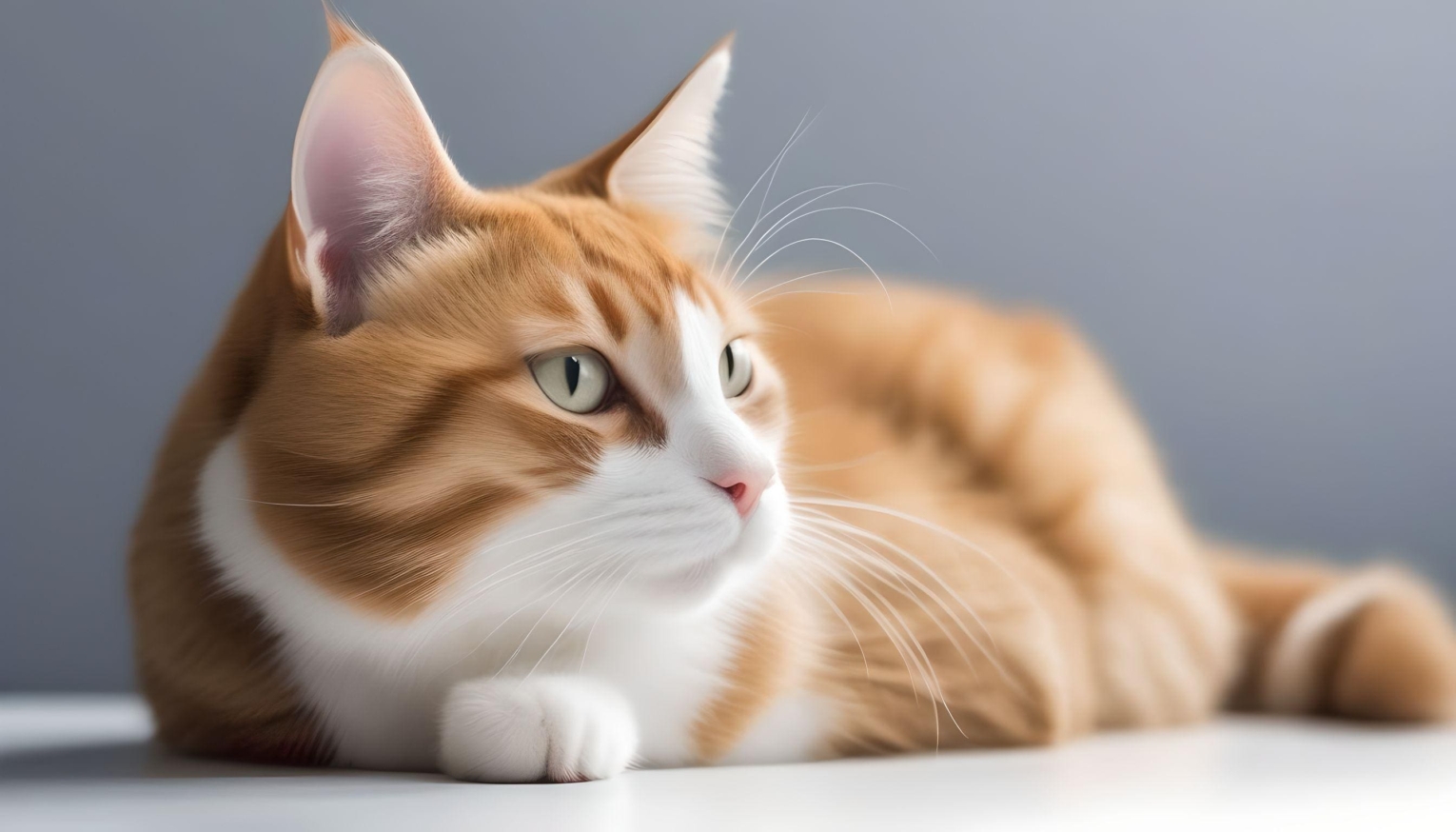
Tuxedo cats are aptly named due to their black and white coat patterns that resemble a tuxedo. When this pattern includes shades of orange, it adds a dash of color to their formal attire. Orange tuxedo cats are charming and lively, bringing a touch of elegance and playfulness to their owner’s life.
- Behavior/Personality: Elegant, charming, lively
- Temperament: Charming and lively
- Height: 9-11 inches (23-28 cm)
- Weight: 6-16 pounds (2.5-7 kg)
- Good Pet? Brings elegance and playfulness to any home.
- Price:
- INR 10,000 – 20,000 (Approx.)
- USD 135 – 270 (Approx.)
9. Bengal Orange Cat

Bengal cats are known for their wild appearance, which includes beautiful marbled or spotted patterns. When they come in an orange hue, their unique and striking look is emphasized. Bengal orange cats are known for their energy and love of adventure, often requiring plenty of play and mental stimulation.
- Behavior/Personality: Wild appearance, energetic, adventurous
- Temperament: Energetic and adventurous
- Height: 10-16 inches (25-40 cm)
- Weight: 8-15 pounds (3.5-7 kg)
- Good Pet? Ideal for those who want an active and lively cat.
- Price:
- INR 20,000 – 45,000 (Approx.)
- USD 270 – 600 (Approx.)
- INR 20,000 – 45,000 (Approx.)
10. Orange Ragamuffin Cat

Ragamuffin cats are known for their sweet and easygoing personalities. When they come in an orange coat, they bring an extra dose of charm and warmth to any home. These cats are affectionate, enjoy being with their human companions, and have a knack for making everyone feel loved and cherished.
- Behavior/Personality: Sweet, easygoing, affectionate
- Temperament: Sweet and easygoing
- Height: 9-11 inches (23-28 cm)
- Weight: 10-20 pounds (4.5-9 kg)
- Good Pet? Perfect for those seeking an affectionate and loving cat.
- Price:
- INR 15,000 – 30,000 (Approx.)
- USD 200 – 400 (Approx.)
11. Orange Siberian Cat
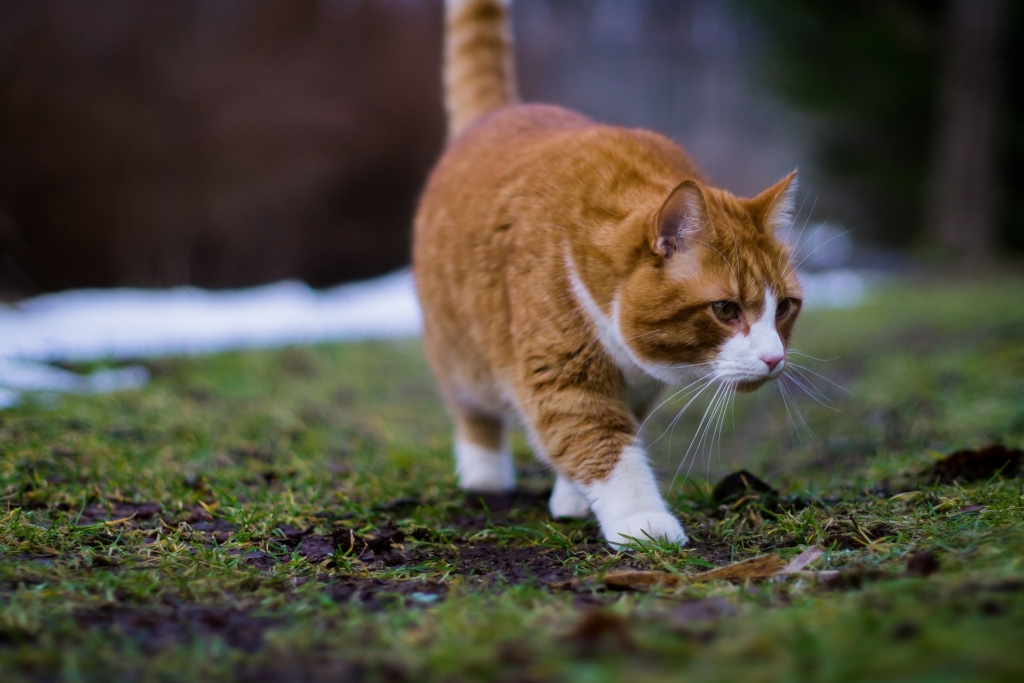
Siberian cats are famous for their thick fur, which helps them withstand harsh climates. When they have an orange coat, they exhibit not only a stunning appearance but also a strong adaptability to various living conditions. Siberian cats are friendly and often become an integral part of the family.
- Behavior/Personality: Thick-furred, friendly, adaptable
- Temperament: Friendly and adaptable
- Height: 9-11 inches (23-28 cm)
- Weight: 8-17 pounds (3.5-7.5 kg)
- Good Pet? Adapts well to different living conditions.
- Price:
- INR 12,000 – 28,000 (Approx.)
- USD 160 – 375 (Approx.)
12. Orange Ragdoll Cat

Ragdoll cats are known for their gentle and docile nature, and when they come in an orange color, their serene personalities are complemented by their striking appearance. These cats are loving and affectionate, often going limp like a “ragdoll” when held, making them a perfect choice for those seeking a cuddly companion.
- Behavior/Personality: Gentle, docile, cuddly
- Temperament: Gentle and docile
- Height: 9-11 inches (23-28 cm)
- Weight: 10-20 pounds (4.5-9 kg)
- Good Pet? Ideal for those seeking a loving and cuddly companion.
- Price:
- INR 14,000 – 32,000 (Approx.)
- USD 190 – 430 (Approx.)
13. Domestic Shorthair Cat Orange

Domestic shorthair cats come in a variety of colors and patterns, including orange. These cats have diverse personalities, which can range from playful to easygoing. They are known for their adaptability and are often found in animal shelters, making them wonderful choices for adoption.
- Behavior/Personality: Diverse, adaptable, playful
- Temperament: Diverse personalities, adaptable
- Height: 9-10 inches (23-25 cm)
- Weight: 8-16 pounds (3.5-7 kg)
- Good Pet? Great for those seeking an adaptable and playful companion.
- Price:
- INR 6,000 – 15,000 (Approx.)
- USD 80 – 200 (Approx.)
14. Short Hair Orange Cat

Short-haired orange cats are known for their low-maintenance grooming needs. Despite their shorter fur, they are equally charming and playful as their long-haired counterparts. These cats are excellent for individuals with busy lifestyles, as they require less grooming but still provide the companionship and entertainment that cat owners adore.
- Behavior/Personality: Charming, low-maintenance, playful
- Temperament: Charming and playful
- Height: 8-10 inches (20-25 cm)
- Weight: 8-16 pounds (3.5-7 kg)
- Good Pet? Ideal for those with busy lifestyles and looking for low-maintenance cats.
- Price:
- INR 8,000 – 16,000 (Approx.)
- USD 110 – 215 (Approx.)
15. Scottish Fold
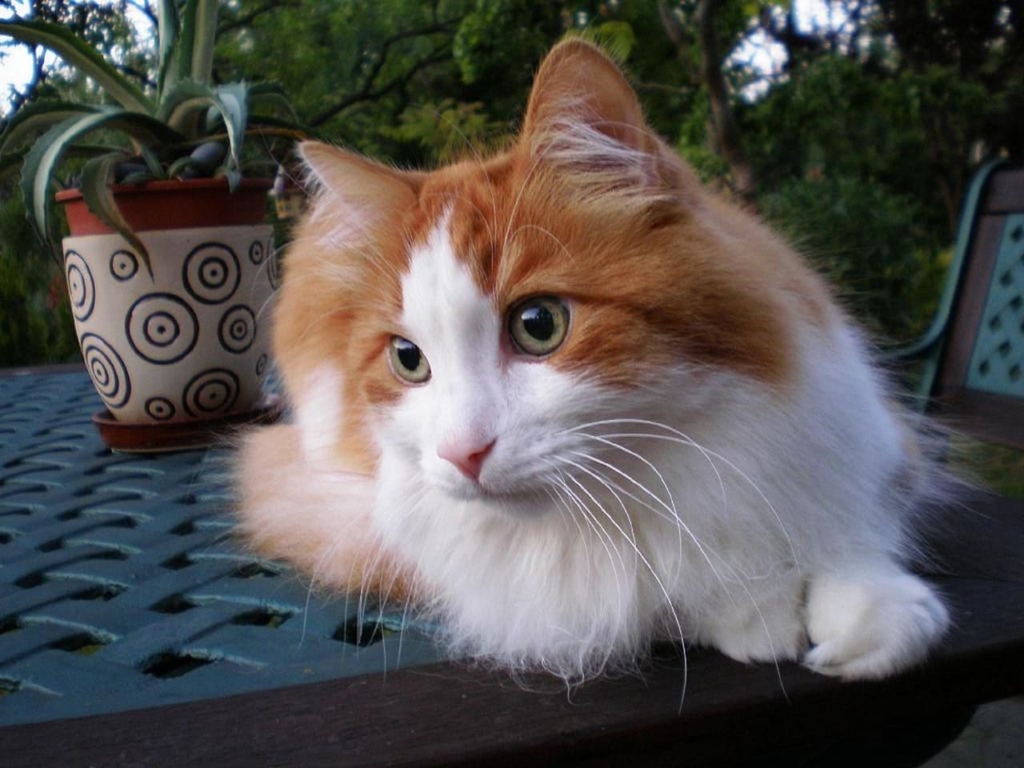
Scottish Fold cats are recognized by their unique folded ears, and when they come in an orange coat, they add a touch of uniqueness to their already distinct appearance. These cats are known for their sweet and gentle nature, making them ideal companions for those looking for a special and loving feline friend.
- Behavior/Personality: Unique, sweet, gentle
- Temperament: Sweet and gentle
- Height: 9-11 inches (23-28 cm)
- Weight: 6-13 pounds (2.5-6 kg)
- Good Pet? Ideal for those seeking a special and loving feline friend.
- Price:
- INR 15,000 – 35,000 (Approx.)
- USD 200 – 470 (Approx.)
History of Orange Cat
The history of orange cats dates back centuries. These cats have been depicted in ancient art and have appeared in various cultures throughout history. While the exact origin of the orange coat color is not well-documented, orange cats have always been admired for their distinctive appearance and playful personalities.
Appearance of Orange Cats
Orange cats are characterized by their striking, vibrant orange coat color. This color can vary from pale cream to deep, fiery orange, and they often have tabby patterns, mottled spots, or bicolor variations. Their distinct appearance is one of the main reasons they are so popular among cat enthusiasts.
Temperament of Orange Cat
Orange cats are known for their friendly and outgoing temperament. They are often social, affectionate, and enjoy human companionship. Their playful nature and love for interactive activities make them delightful pets for families and individuals alike.
Orange Cat Behavior
Orange cat behavior is often characterized by their high energy level and curiosity. They enjoy activities such as chasing toys and exploring their environment. Orange cats can be trained to perform tricks and are known for their intelligence, making them excellent problem solvers.
Angry Orange Cat
While orange cats are generally known for their friendly nature, like all cats, they can sometimes display signs of anger or irritation. These emotions are typically a response to specific triggers, and understanding a cat’s body language and cues is essential for preventing and managing anger in any cat.
Orange Cat Personality
The personality of an orange cat is often described as playful, affectionate, and outgoing. They tend to form strong bonds with their human companions and enjoy being the center of attention. Their amiable disposition makes them wonderful additions to households looking for a loving and lively pet.
Orange Tabby Cat Personality
Orange tabby cats, a subset of orange cats, share many personality traits with their solid orange counterparts. They are known for their friendliness, curiosity, and playfulness. Orange tabbies often have a reputation for being outgoing and sociable.
Are Orange Cats Crazy
The idea that orange cats are “crazy” is more of a stereotype than a fact. While orange cats can exhibit high levels of energy and playfulness, these characteristics are not indicative of craziness. Their behavior is often a sign of a healthy and active cat.
Why Are Orange Cats So Crazy
The perception of orange cats as being “crazy” may arise from their energetic and exuberant behavior. This high energy level is a result of their playful nature and curiosity. While they may seem more active than some other cat breeds, it’s not indicative of being “crazy.”

Are Orange Female Cats Rare
Orange female cats are relatively rare compared to orange males. The gene responsible for the orange coat color is carried on the X chromosome, and for a female cat to be orange, she needs two X chromosomes with the orange gene. This makes orange females less common than their male counterparts, who only require one orange gene on their single X chromosome.
Are Orange Cats Always Male
No, orange cats are not always male. While orange cats, especially with a solid orange coat, are more frequently male due to the genetics of the coat color, there are still many female orange cats. The presence of orange females is due to the genetic combinations that allow for orange coats on both male and female cats.
Are Orange Cats Dumb
The notion that orange cats are “dumb” is a stereotype and is not based on scientific evidence. Intelligence varies among individual cats regardless of their coat color. Orange cats can be intelligent, quick learners, and problem solvers, just like cats of any other color.
Why Are Orange Cats So Dumb
The idea that orange cats are “dumb” is a misconception. Any perceived differences in intelligence are more likely due to individual variation rather than coat color. Cats’ behavior and intelligence are shaped by a combination of genetics and environment, not their coat color.
Orange Cat Price
The price of an orange cat in India can range from approximately ₹5,000 to ₹20,000 or more, depending on factors such as breed, age, and pedigree. In the USA, the cost of an orange cat varies, with adoption fees ranging from $50 to $150 at shelters, while purchasing from a breeder can be significantly higher, typically between $500 to $1,500.
Orange Cat Price in United Kingdom (UK):
In the UK, the cost of an orange cat can vary widely based on factors such as breed, age, and breeder reputation. Generally, you can expect to pay anywhere from £200 to £800 or more for an orange cat from a reputable breeder. Adoption fees at shelters and rescues are typically lower, ranging from £50 to £150.
Orange Cat Price in Canada:
In Canada, the price of an orange cat is similar to that in the United States, with adoption fees at shelters and rescues ranging from $50 to $150, while purchasing from a breeder can be considerably higher, often between $500 and $1,500 or more, depending on the breed.
Orange Cat Price in Australia:
In Australia, the cost of an orange cat varies based on breed and source. Cats from breeders can range from AUD $800 to $2,000 or more. Adoption fees for orange cats at shelters typically range from AUD $100 to $200.
Orange Cat Price in Germany:
In Germany, the price of an orange cat can range from €300 to €800 or more when obtained from a reputable breeder. Adoption fees at shelters in Germany can be more affordable, ranging from €50 to €150.
Orange Cat Price in France:
In France, the cost of an orange cat from a reputable breeder typically ranges from €300 to €800 or more, depending on the breed and pedigree. Adoption fees at shelters in France are usually more affordable, ranging from €50 to €150.
Orange Cat Price in India:
In India, the price of an orange cat can vary widely based on breed, age, and source. You can find orange cats for sale from breeders with prices ranging from ₹5,000 to ₹20,000 or more. Adoption fees at Indian shelters and rescues are generally more budget-friendly, typically ranging from ₹500 to ₹2,000.
Orange Cat Price in Japan:
In Japan, the cost of an orange cat can vary, with prices often ranging from ¥10,000 to ¥50,000 or more for a cat from a reputable breeder. Adoption fees at shelters and rescue organizations in Japan typically range from ¥3,000 to ¥10,000.
Orange Cat Price in South Africa:
In South Africa, the price of an orange cat also varies based on breed and source. Cats from reputable breeders can range from ZAR 2,000 to ZAR 5,000 or more. Adoption fees for orange cats at shelters and rescues in South Africa typically range from ZAR 500 to ZAR 1,500.
Orange Cat Prices In Major USA and Indian Cities
Here are Orange Cat Prices In Major USA and Indian Cities:
| City | Orange Cat Price (USA) | Orange Cat Price (India) |
|---|---|---|
| New York | $50 – $200 (Adoption) | ₹8,000 – ₹20,000 |
| Los Angeles | $70 – $250 (Adoption) | ₹7,000 – ₹18,000 |
| Chicago | $60 – $220 (Adoption) | ₹6,500 – ₹16,000 |
| Houston | $50 – $190 (Adoption) | ₹7,000 – ₹19,000 |
| Atlanta, USA | $60 – $200 (Adoption) | – |
| Dallas, USA | $70 – $230 (Adoption) | – |
| Miami, USA | $65 – $210 (Adoption) | – |
| Mumbai, India | – | ₹6,000 – ₹16,000 |
| Delhi, India | – | ₹5,500 – ₹15,000 |
| Bangalore, India | – | ₹6,500 – ₹17,000 |
| Kolkata, India | – | ₹6,200 – ₹16,500 |
| Chennai, India | – | ₹6,000 – ₹15,500 |
| Pune, India | – | ₹6,300 – ₹17,000 |
| San Francisco, USA | $70 – $220 (Adoption) | – |
| Seattle, USA | $65 – $210 (Adoption) | – |
| Toronto, Canada | $60 – $200 (Adoption) | – |
| London, UK | – | £220 – £800 |
| Sydney, Australia | – | AUD $120 – AUD $250 |
| Berlin, Germany | – | €320 – €850 |
Factors that Affect the Price of Orange Cat
Some common Factors that Affect the Price of Orange Cat:
- Breed: The breed of the orange cat is a significant determinant of its price. Purebred cats from well-known breeds are generally more expensive than mixed-breed cats. Breeds like Maine Coon, Bengal, and Siamese often command higher prices due to their distinct characteristics.
- Pedigree: Cats with documented pedigrees and lineage can be more costly. The presence of championship bloodlines or show-quality cats can significantly raise the price of an orange cat.
- Color and Coat Pattern: The specific shade of orange and the coat pattern can influence the price. Cats with unique or striking coloration or patterns may be priced higher. For example, a rare solid orange coat can be more expensive than a common orange tabby.
- Age: Kittens are generally more expensive than adult cats. The age of the cat can impact its price, as kittens are in high demand due to their playful and adorable nature.
- Health and Vaccinations: Cats with up-to-date vaccinations, health certificates, and a clean bill of health from a veterinarian may command higher prices. A healthy cat is an investment in long-term companionship.
- Breeder Reputation: Reputable breeders who prioritize the well-being and health of their cats may charge higher prices. The quality of care and breeding practices can affect the cost.
- Geographic Location: The price of orange cats can vary significantly based on the location. Cats in urban areas or regions with high demand for specific breeds may be more expensive than in rural areas.
- Spaying/Neutering: Some cats may be sold with a spaying/neutering requirement. Cats sold as pets without breeding rights are often less expensive than those with breeding potential.
- Market Demand: The demand for specific cat breeds or coat colors can fluctuate, affecting prices. Rare or trending breeds may be more expensive due to increased demand.
Monthly Maintenance Cost of Orange Cats:
The monthly maintenance cost of an orange cat includes expenses such as food, litter, grooming, healthcare, and other supplies. On average, this cost can range from $30 to $60 in the USA and ₹1,000 to ₹4,000 in India. The actual monthly cost may vary depending on factors like the cat’s size, age, and specific needs. It’s important to budget for these ongoing expenses to ensure the well-being of your feline companion. Regular veterinary care and preventive treatments are crucial for maintaining your cat’s health and can contribute to long-term well-being and reduced healthcare expenses.
Orange Cat Facts
Some interesting facts about orange cats:
- Genetic Quirk: The distinctive orange color in cats is a result of a genetic quirk. It’s caused by a recessive gene on the X chromosome, and both parents must carry this gene to produce an orange cat.
- Variety of Shades: Orange cats come in a wide range of shades, from pale creams to deep, fiery oranges. Some have solid coats, while others display patterns like tabby stripes, spots, or patches.
- More Likely to Be Male: Orange cats are more commonly male. To be an orange female cat, the cat must inherit two orange genes (one from each parent), making them less common.
- Popular in Pop Culture: Orange cats have been popular in various forms of media, from the famous Garfield and Heathcliff comic strips to Puss in Boots from the Shrek franchise.
- Friendly and Outgoing: Orange cats are often described as friendly and outgoing. They tend to be sociable and enjoy human companionship.
- No Specific Breed: Orange isn’t a breed itself; it’s a coat color that can be found in various breeds. Maine Coon, Persian, and Siamese cats are some of the breeds where you can find orange-coated individuals.
- Playful Nature: Orange cats are known for their playful and energetic behavior. They enjoy toys, interactive play, and exploring their environment.
- Unique Eye Colors: Some orange cats have unique eye colors, including shades of green, amber, or blue, which can enhance their striking appearance.
- Historical Significance: Throughout history, orange cats have been depicted in art and literature. They’re often associated with positive symbolism, such as good fortune and creativity.
- Low Maintenance Grooming: Most orange cats have short to medium-length fur, making them relatively low maintenance in terms of grooming. Regular brushing is usually sufficient to keep their coats in good condition.
Pros and Cons of Orange Cats
Some common pros and cons of owning orange cats:
| Pros of Orange Cats | Cons of Orange Cats |
|---|---|
| Friendly and Sociable: Orange cats are often known for their friendly and outgoing nature, making them great companions. | Shedding: Some orange cats may shed quite a bit, which can require regular grooming and cleaning in your home. |
| Playful and Energetic: They tend to be playful and full of energy, providing entertainment and fun interactions for their owners. | Health Issues: Just like any cat, they can be prone to certain health issues, requiring regular veterinary care. |
| Unique Appearance: The striking orange coat color and variations make them visually appealing and unique. | Less Common in Females: Orange female cats are less common, as they need two orange genes. |
| Low Maintenance Grooming: Many orange cats have short to medium-length fur, reducing the need for extensive grooming. | Independence: While some orange cats are affectionate, others may be more independent and less cuddly. |
| Variety of Breeds: Orange cats can be found in various breeds, allowing for a wide range of personality traits and characteristics. | Allergies: Some individuals may have allergies to cat dander, which can be an issue with any cat breed or color. |
| Positive Symbolism: Historically, orange cats have been associated with good fortune and creativity, adding a positive aura to their presence. | Shedding on Furniture: Orange cat fur can cling to furniture and clothing, requiring regular cleaning and maintenance. |
Care Tips for Orange Cats
Caring for orange cats involves providing them with proper attention, nutrition, grooming, and medical care. Here are some care tips for orange cats:
- Regular Veterinary Check-ups: Schedule regular check-ups with a veterinarian to ensure your orange cat’s health is monitored and maintained. Vaccinations, dental care, and preventive treatments should be part of the routine.
- Balanced Diet: Feed your cat a well-balanced and nutritious diet. Ensure that the food you choose is appropriate for their age, size, and any specific dietary needs. Fresh water should always be available.
- Grooming: While many orange cats have short to medium-length fur, regular grooming is still necessary to keep their coats in good condition. Brush your cat to reduce shedding and prevent matting. The frequency of grooming can vary based on the individual cat’s coat.
- Play and Mental Stimulation: Orange cats are typically playful and energetic. Provide toys and engage in interactive play to keep them mentally and physically active. Puzzle feeders and treat-dispensing toys can also stimulate their minds.
- Litter Box Maintenance: Keep the litter box clean and scoop waste regularly. Ensure the litter box is in a quiet, accessible location for your cat.
- Socialization: Spend quality time with your orange cat. They thrive on human interaction and companionship. Regular petting and cuddling help strengthen your bond.
- Exercise: Provide opportunities for your cat to exercise. Interactive toys, scratching posts, and climbing structures can keep them engaged and physically fit.
- Dental Care: Dental health is vital. Brush your cat’s teeth regularly or offer dental treats and toys to help prevent dental issues.
- Safety: Ensure that your home is safe for your orange cat. Remove potential hazards, such as toxic plants, chemicals, and small objects that could be swallowed.
- Spaying/Neutering: If your cat is not intended for breeding, consider spaying or neutering. This can prevent unwanted litters and may also have health and behavioral benefits.
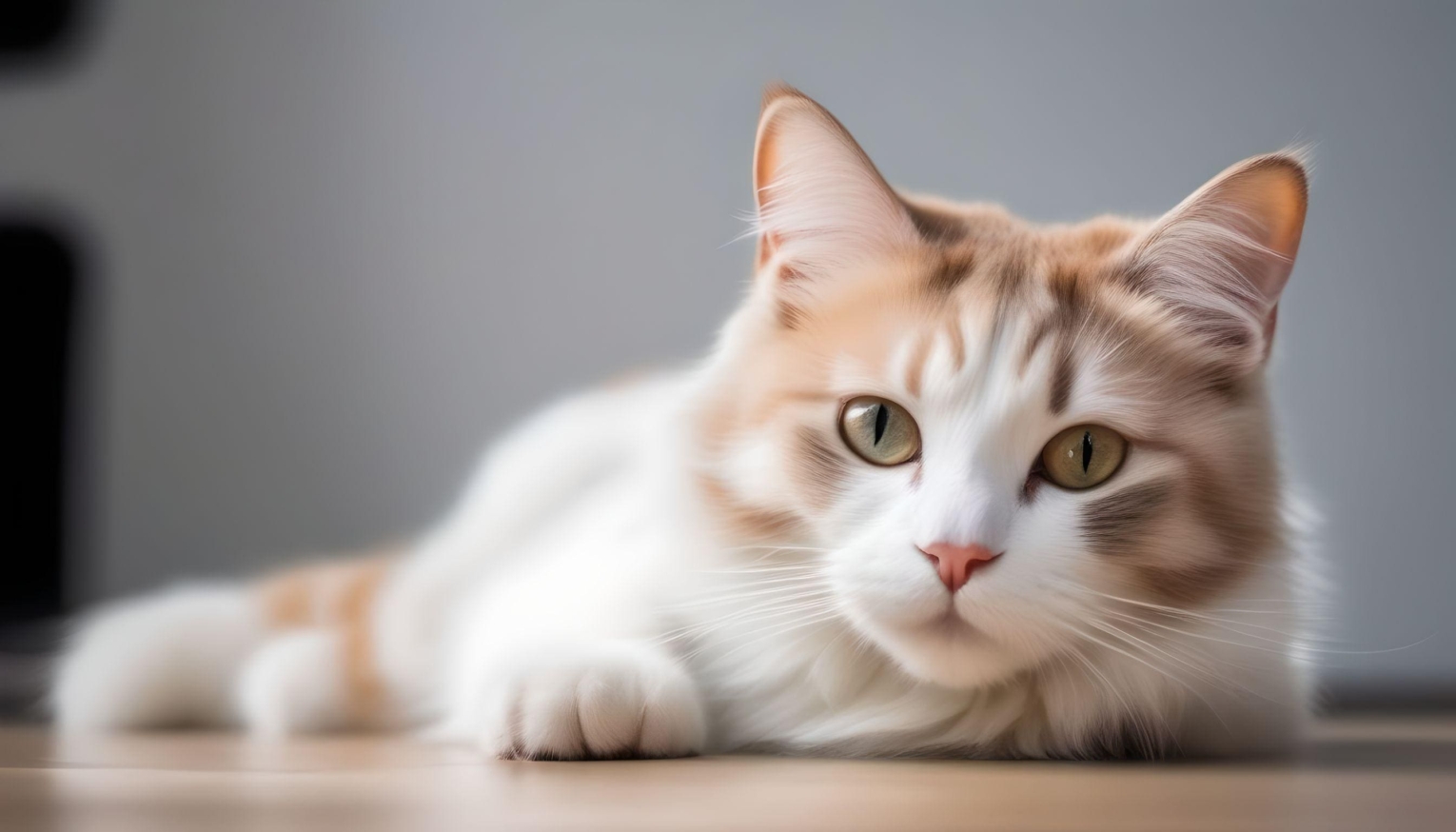
Health Issues of Orange Cats
Orange cats, like cats of any other coat color, can be susceptible to a range of health issues. It’s important for cat owners to be aware of these potential health concerns and provide proper veterinary care. Here are some common health issues that can affect orange cats:
- Obesity: Orange cats, especially those with a sedentary lifestyle, can be prone to obesity. Obesity can lead to various health problems, such as diabetes, joint issues, and heart disease.
- Dental Problems: Dental issues, including gingivitis and periodontal disease, can be common in orange cats. Regular dental care and cleanings are essential to maintain oral health.
- Urinary Tract Problems: Some cats, regardless of coat color, may develop urinary tract issues, such as urinary tract infections or urinary blockages. These conditions require prompt veterinary attention.
- Allergies: Cats, including orange ones, can develop allergies to various environmental factors, including pollen, dust, or certain foods. Allergies may lead to skin problems, respiratory issues, or gastrointestinal symptoms.
- Heart Disease: Hypertrophic cardiomyopathy (HCM), a heart condition, can affect cats of all colors. Regular veterinary check-ups can help detect heart issues early.
- Diabetes: Obesity and genetic factors can increase the risk of diabetes in orange cats. Managing weight and monitoring their diet are essential for diabetes prevention.
- Cancer: While not specific to orange cats, they can develop cancer like any other cat. Cats may be prone to lymphoma, skin cancer, and other malignancies.
How Long Do Orange Tabby Cats Live
The lifespan of an orange tabby cat, like any cat, can vary based on various factors, including genetics, lifestyle, and overall care. On average, orange tabby cats can live to be 15 years or older, with some reaching 18 to 20 years or more. Proper nutrition, regular veterinary care, a safe living environment, and a loving home play crucial roles in ensuring a long and healthy life for your orange tabby cat.
Food for Orange Cats
Here are the key considerations for food when it comes to orange cats:
| Food for Orange Cats | Description |
|---|---|
| High-Quality Cat Food | Provide your orange cat with a balanced, high-quality cat food that meets their age, size, and specific dietary needs. Opt for premium commercial cat food, either dry or wet, to ensure proper nutrition. |
| Protein-Rich Diet | Cats are obligate carnivores, so their diet should be rich in animal-based proteins. Look for cat food with a high meat content, as it provides essential nutrients for their health and energy. |
| Portion Control | Be mindful of portion sizes to prevent obesity. Follow feeding guidelines on the cat food packaging and adjust based on your cat’s age, activity level, and metabolism. |
| Fresh Water | Always provide access to clean, fresh water. Proper hydration is essential for your cat’s overall well-being and kidney health. |
| Avoid Human Food | Refrain from feeding your cat human foods, as some can be harmful. Avoid chocolate, onions, garlic, grapes, and foods with bones, as they can pose health risks. |
| Limit Treats | While occasional treats are fine, limit them to prevent overindulgence. Special cat treats are available and should be given in moderation. |
| Consult a Vet | If you have specific dietary concerns or need guidance on your orange cat’s nutrition, consult your veterinarian for personalized recommendations. They can advise on any dietary restrictions or prescription diets if necessary. |
| Consider Allergies | Some cats may have food allergies. If you notice signs of allergies (itchy skin, gastrointestinal issues), discuss food options with your vet. They may recommend hypoallergenic diets. |
Orange Cat Names
Popular Names for Orange Cats:
| Male Name Ideas for Orange Cats | Female Name Ideas for Orange Cats |
|---|---|
| Sunny | Rosie |
| Rusty | Cleo |
| Amber | Daisy |
| Butterscotch | Tawny |
| Tangerine | Tinkerbell |
| Simba | Ruby |
| Blaze | Autumn |
| Goldie | Clementine |
| Pumpkin | Bella |
| Ginger | Peaches |
| Mango | Nala |
| Cinnamon | Zinnia |
| Marmalade | Cinnamon |
| Apricot | Tangerine |
| Nala | Ginger |
| Marigold | Goldie |
| Peaches | Apricot |
| Marigold | Honey |
| Zinnia | Marigold |
Orange Cat Names Male
Orange Cat popular Names for Male:
| Male Name Ideas for Orange Cats | Male Name Ideas for Orange Cats |
|---|---|
| Leo | Simba |
| Simba | Garfield |
| Garfield | Rusty |
| Rusty | Oliver |
| Oliver | Apollo |
| Apollo | Marmalade |
| Marmalade | Chester |
| Chester | Butterscotch |
| Butterscotch | Cheeto |
| Cheeto | Tigger |
| Tigger | Rusty |
| Finn | Pumpkin |
| Pumpkin | Scooter |
| Scooter | Tucker |
| Tucker | Ginger |
| Ginger | Sunny |
| Sunny | Mango |
| Mango | Marigold |
Orange Female Cat Names
Orange Female Cat Popular Names:
| Female Name Ideas for Orange Cats | Female Name Ideas for Orange Cats |
|---|---|
| Rosie | Cleo |
| Cleo | Daisy |
| Daisy | Tawny |
| Tawny | Tinkerbell |
| Tinkerbell | Ruby |
| Ruby | Autumn |
| Autumn | Clementine |
| Clementine | Bella |
| Bella | Peaches |
| Peaches | Nala |
| Nala | Zinnia |
| Zinnia | Marmalade |
| Marmalade | Cinnamon |
| Cinnamon | Tangerine |
| Tangerine | Ginger |
| Ginger | Goldie |
| Goldie | Apricot |
| Apricot | Honey |
| Honey | Marigold |
Badass Orange Cat Names
Orange Cat Badass Names:
| Badass Name Ideas for Orange Cats | Badass Name Ideas for Orange Cats |
|---|---|
| Blaze | Rumble |
| Rumble | Thor |
| Thor | Tiger |
| Tiger | Reaper |
| Reaper | Rebel |
| Rebel | Inferno |
| Inferno | Zeus |
| Zeus | Lightning |
| Lightning | Hercules |
| Hercules | Phoenix |
| Phoenix | Jinx |
| Jinx | Saber |
| Saber | Bandit |
| Bandit | Rocket |
| Rocket | Maverick |
| Maverick | Gunner |
| Gunner | Harley |
| Harley | Diablo |
| Diablo | Maverick |
Cute Orange Cat Names
Orange Cat Cute Names:
| Cute Name Ideas for Orange Cats | Cute Name Ideas for Orange Cats |
|---|---|
| Whiskers | Munchkin |
| Munchkin | Snickers |
| Snickers | Pudding |
| Pudding | Paws |
| Paws | Bubbles |
| Bubbles | Snuggle |
| Snuggle | Fluffy |
| Fluffy | Cupcake |
| Cupcake | Peanut |
| Peanut | Biscuit |
| Biscuit | Jellybean |
| Jellybean | Toffee |
| Toffee | Muffin |
| Muffin | Sprinkle |
| Sprinkle | Marshmallow |
| Marshmallow | Butterscotch |
| Butterscotch | Lollipop |
| Lollipop | Cookie |
| Cookie | Peachy |
Orange Cat Video
Conclusion:
In conclusion, orange cats are not only visually striking with their beautiful coat colors but also known for their unique and often friendly personalities. These felines come in a variety of breeds and can be found in both male and female cats. While some general traits may be associated with orange cats, individual personalities vary, making each orange cat a special and cherished companion. Proper care, including nutrition, grooming, and healthcare, is essential to ensure their well-being and a long, happy life. Whether you’re considering adopting an orange cat or already have one, these vibrant and affectionate felines make wonderful additions to any family.
Frequently Asked Questions on Orange Cats:
-
What breeds of cats can be orange?
Orange coloration can appear in various cat breeds. Some common ones include Maine Coon, Persian, Siamese, Tabby, and Scottish Fold, but it’s not limited to these breeds.
-
Are all orange cats male?
No, not all orange cats are male. While the orange color is more common in males due to genetics, there are female orange cats. Female orange cats typically have two X chromosomes with the orange gene.
-
Do orange cats have a specific temperament?
Orange cats are often described as friendly, outgoing, and sociable. However, each cat has its unique personality, so temperaments can vary.
-
Can I predict an orange kitten’s personality based on its coat color?
Coat color is not a guaranteed predictor of a cat’s personality. While orange cats may have common traits, individual personalities vary.
-
How can I care for the coat of my orange cat?
Regular brushing is essential to maintain the coat of your orange cat. This helps reduce shedding and prevents matting.
-
What should I feed my orange cat?
A high-quality, balanced cat food that meets your cat’s specific age and dietary needs is recommended. Consult your veterinarian for guidance.
-
Are orange cats more prone to health issues?
Orange cats are not inherently more prone to health issues. Their health depends on factors like genetics, diet, and care.
-
How long do orange cats typically live?
Orange cats have a similar lifespan to other cats. On average, they can live 15 years or more with proper care.
-
Are there any specific names that suit orange cats?
Orange cats can have a wide range of names. You can choose from names like Rusty, Pumpkin, Amber, or even names that match their unique personality.
-
Can you change the coat color of an orange cat?
No, you cannot change the coat color of a cat. Coat color is determined by genetics and cannot be altered.
Recommended –
- Polydactyl Cats | Breed Profile, Price, 5 Types, Care Tips, Facts, Health
- Weimaraner Dog | Breed Information, Price, 8 Types, Care Tips, Facts, Health
- Orange Tabby Cat | 6 Types, Breed Information, Price, Care Tips, Facts
- Chimera Cats | Personality, Prices, Care Tips, 10 Facts, Food, Health Issues
- Maine Coon Cat | Breed Information, Price, 10 Types, Facts, Care Tips, Health
- Bengal Cats | 10 Types, Price, Characteristics, Facts, Care Tips, Health


